My First Novel?: Fanfiction as a Practice Run (Part III – The Writing)
Time for Part 3 of my story. In case you missed the first two parts, I’m currently in process of telling the story behind a “novel” I recently published online: a fanfiction titled Chaos and Control. Part 1 introduces the idea of the story, and Part 2 is about the planning that went into it before the actual writing began. Have fun reading the next part of the story!
Today, I’m going to talk about the long yet wonderful process of writing Chaos and Control. This was definitely my favorite part of the journey, and probably the one that taught me the most. Enjoy!
Part III: The Writing
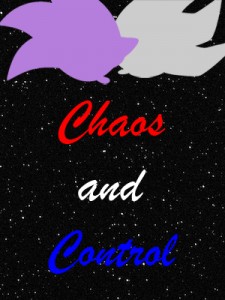 A quick note before I continue: remember how I mentioned that this story came out to almost 150,000 words? Well, the first story I wrote with my original characters, Generation Beta, was just over 70,000 words, so technically that was the first novel I ever published. Still, I prefer to consider Chaos and Control my true first novel, because I put much more time and effort into creating it. Just thought that was worth pointing out.
A quick note before I continue: remember how I mentioned that this story came out to almost 150,000 words? Well, the first story I wrote with my original characters, Generation Beta, was just over 70,000 words, so technically that was the first novel I ever published. Still, I prefer to consider Chaos and Control my true first novel, because I put much more time and effort into creating it. Just thought that was worth pointing out.
OK, back to this topic. After coming up with the idea and planning the story for a few weeks, I produced a 14-chapter outline for the fanfiction I wanted to write. I set up a text file where I wrote a summary of each chapter, so I’d have a basic plan to follow while working on the first drafts. Finally ready to start, I set to work on my new fanfiction.
Fleshing out the Skeleton
Some of you may remember a blog post I wrote a while back on something I called the “Frankenstein Writing Method“. Well, I used that technique quite a bit while working on this novel. Before I even began writing the first chapter, I had already started putting together a collection of excerpts as they came to me, worded almost exactly the way I wanted to write them into the story. This helped me to keep a clear idea of the entire plot, and it reassured me of how much I had really thought the story through. Even though I was still writing the beginning, I already had a set vision of how I wanted the plot to play out. And that gave me the motivation to always keep going.
So I started writing Chapter 1. I wrote a prologue in the style of a sonnet to parody Shakespeare’s introduction to his play. After that came a paragraph to introduce the setting of the story. Then I jumped into the action, setting up a scene to establish the rivalry between factions and introduce the most important supporting characters.
After I typed out the last sentence, I sat back and smiled in satisfaction at what I had created. Although the work was still far from over, I was proud of myself for having stuck to my commitment this far. The beginning of a story is often the hardest part to write, and at least the first step was out of the way. Now to move on to Chapter 2.
Enter Romeo and Juliet

Meet Sonic the Hedgehog, Miles and Lily’s father. He leads the progressivist faction of Control, and possesses a Gift of super speed.
In some ways, Chapter 2 was even harder to write than Chapter 1. That was because the former was an even more significant foundation for the story than the latter. While Chapter 1 was an introduction of the town feud and my supporting characters, Chapter 2 was the moment I would introduce my leads, and however I wrote this part, it would set up the most important relationship in the story for the rest of the novel. This meant I had to handle this chapter very carefully, especially because the single greatest factor I wanted to stand out in my story was character development.
So I had to decide well in advance how I wanted to portray my own Romeo and Juliet. I wanted my heroes to grow with each other, but also be able to stand on their own. I wanted them to be lovable yet flawed, innocent yet passionate, idealistic yet wise beyond their years. I wanted them to love and want each other without ever actually needing each other. And all their growth would depend on how I first presented them in the story. Not to put too much pressure on myself, but I absolutely had to get this right.
Miles and Maria are introduced in separate scenes within the same chapter. Both of them are first seen distant and lost in thought, but neither one of them is actually depressed. They each interact with their respective best friends – Miles (Romeo) with Lily (Benvolio), and Maria (Juliet) with Angelica (the Nurse) – and it’s through these conversations that hints of the people they want to (and will) become are revealed. The most positive qualities of the supporting characters are also shown in this chapter, including Sonia (Mercutio) and Rex (Tybalt), to help establish the other relationships that would last throughout the fanfiction.
Satisfied with all my characters’ introductions, I could now focus on developing the heroes’ relationship over the next 12 chapters. So I did. The growth my characters experienced after meeting each other drove the plot in a powerful way that left me feeling extremely proud by the time I typed the final words on the very last page. But more on that later on.
A Long Journey, Surprises at Every Turn
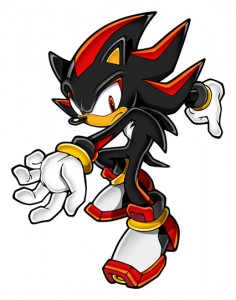
Meet Shadow the Hedgehog, Maria’s father. He leads the traditionalist faction of Chaos, and his Calling is warping through space.
Aside from being the most fun (funnest?) part of working on this story, writing it was also the longest part. Determined to finish my fanfiction no matter what, I worked on it every single day. I set a goal to write at least a page a day, and with most chapters reaching just under 30 pages, not to mention other projects I had to focus on, the writing process alone ended up taking me almost a year and a half to finish.
It wasn’t always easy sticking to this schedule. There were days when I barely had time to spare for this story, and others when I simply didn’t feel inspired to write. But I stuck to it anyway, because I knew it would be all the more satisfying when I finally finished the novel.
Yet what made the ride truly enjoyable was the way the story itself surprised me throughout the journey. Sometimes I felt it really wasn’t taking as much effort to write as I expected it to, because in a way, the characters were creating themselves. The further I got into the story, the greater their personalities developed, constantly sparking new ideas that I had never anticipated during the planning process. But this post is long enough as it is, so I’ll save the details for next time.
On a final note, I know some people might think I’m crazy for taking fanfiction as seriously as I do, and maybe I am. But as a writer who always takes her craft seriously, I fully dedicate myself to every piece I write, no exceptions. It doesn’t matter that it’s fanfiction; Chaos and Control deserved every bit as much love and care as I give to any of my original works, and I’m so glad I was able to pour my whole heart into this story.
This concludes the third part of the story behind my fanfiction. The next post will focus on the editing process and my excruciating attention to the details of my novel. Thanks for reading!
Note: If you’re interested, you’re more than welcome to read my story and even leave some reviews. I promise you don’t need to know too much about the Sonic universe to appreciate it. Reviews are positive, but contain spoilers! Thank you!
Sonic the Hedgehog and all related characters belong to Sega. All official artwork is displayed for illustrative purposes only. I own nothing!
My First Novel?: Fanfiction as a Practice Run (Part II – The Planning)
Welcome to Part 2 of my story. In case you missed it, last week I shared the introduction to a series of posts I’ll be writing about the learning experience behind a “novel” I recently published online: a fanfiction titled Chaos and Control. If you haven’t yet, I suggest you go back and read that post first. Otherwise, have fun reading the next part of the story!
Last week, I started off by briefly telling about the idea for my fanfiction: how I came up with it, why I decided to turn it into a story, etc. Today, I’m going to share the beginning of the creative process, namely the planning that was done before the writing began. Enjoy!
Part II: The Planning
 As I mentioned in the previous post, Chaos and Control is a story based on William Shakespeare’s Romeo & Juliet. While thinking about my original characters during one of my romance phases, I started to realize how well I could fit them into roles parallel to Shakespeare’s tragedy: Miles and Maria, the heroic couple from Generation Beta, as Romeo and Juliet; Miles’s smart and loyal twin sister Lily in the combined roles of Friar Laurence and Benvolio; the siblings’ playful tomboyish cousin Sonia as Mercutio; their noble yet stubborn friend Rex as Tybalt and his bubbly girlfriend Angelica as the Nurse, etc. Not only did their individual personalities fit into the story, but their relationships also seemed to match those of the original characters. They fit so well, in fact, that the more I thought about the story, the more I wanted to write it. The idea wasn’t just floating on my imagination; it was consuming me completely.
As I mentioned in the previous post, Chaos and Control is a story based on William Shakespeare’s Romeo & Juliet. While thinking about my original characters during one of my romance phases, I started to realize how well I could fit them into roles parallel to Shakespeare’s tragedy: Miles and Maria, the heroic couple from Generation Beta, as Romeo and Juliet; Miles’s smart and loyal twin sister Lily in the combined roles of Friar Laurence and Benvolio; the siblings’ playful tomboyish cousin Sonia as Mercutio; their noble yet stubborn friend Rex as Tybalt and his bubbly girlfriend Angelica as the Nurse, etc. Not only did their individual personalities fit into the story, but their relationships also seemed to match those of the original characters. They fit so well, in fact, that the more I thought about the story, the more I wanted to write it. The idea wasn’t just floating on my imagination; it was consuming me completely.
So now would probably be a good point to start talking about the writing process from the beginning, right? Here goes…
Building the Skeleton
Every story needs the skeleton of a basic plot to support it. If I was going to write this story, I knew I needed at least a fundamental idea of how I wanted it to play out. How much should I base on the original play and how much should be my own ideas? How would I incorporate enough elements of the Sonic fandom to justify writing fanfiction instead of an original work? Could I pull off the unique storyline I wanted, especially the ending, the way I planned? All of these were questions I felt I needed to answer before I even typed out the first sentence.
I decided I wanted to create a more innocent version of Romeo & Juliet by combining my original ideas with elements from Shakespeare’s play, plus a few of my favorite adaptations of it (mostly West Side Story and the Romeo x Juliet anime). The feud would be due to a series of political disagreements rooted in the special abilities that all animal characters in the Sonic universe possess. The story would follow the classic theme of two teenagers whose love for each other is hindered by the hatred between their families and friends, and who are willing to do whatever it takes to end the war so they can be together. And I strongly felt my characters could play that role perfectly.
Creating a modern Romeo and Juliet
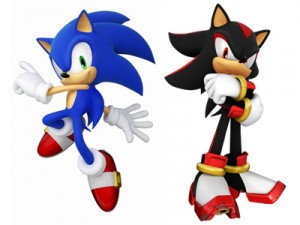
You only really need to know who these two are…
First of all, why use originals as the leads instead of canon characters? Simple: so I could have complete creative control over character development without worrying too much about making those from Sega out-of-character. True, most of them are anyway, but at least they’re only in secondary roles, so it doesn’t detract too much from the fanfiction.
Now for the real question: with so many adaptations of this classic tale already out there, how was I going to make my story truly original and, more importantly, believable? To accomplish that, I opted to update the details from the play with which I didn’t completely agree, or that at least wouldn’t work for my characters:
- The heroes’ story would take place over the course of six months instead of four days, so their affection could have more time to blossom into “real love”.
- Their attraction would be based on much more than physical appearance. The night they meet, they spend almost an hour talking before they kiss. On top of that, they spend much of their private time together immersed in conversation, as if they’ve been best friends their whole lives.
- Supporting characters would also get a fair share of character development. I feel it adds color to the story when Friar Laurence, Mercutio, Tybalt, the Nurse and even Balthasar are given depth as well.
- Aside from the chance to openly be together, the lead couple would hope to achieve peace in their town for the sake of all its citizens, especially their loved ones. They care about their families and friends so much that eloping becomes an absolute last resort to be happy.
- The parents would find out about their children’s relationship before the end of the story, so as to set up the plot for some unusual twists.
- If my “Romeo” was going to die, it had to be as a consequence of saving his “Juliet’s” life. Suicide is inconsistent with my characters.
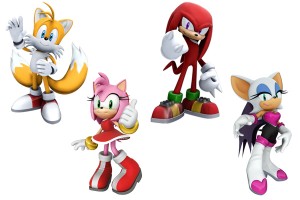
…but knowing who these are too doesn’t hurt!
With all these ideas and more, I felt confident I could turn out a new take on Romeo & Juliet that readers would enjoy. All I needed to do now was flesh out the basic plot that was already forming in my mind. And that phase would begin upon writing the first sentence… which I’ll get into in more detail next week.
This concludes the second part of the story behind my fanfiction. Next week, I’ll focus on the actual writing of the “novel”: the first drafts that brought the initial layers of color to my idea. Thanks for reading!
Note: If you’re interested, you’re more than welcome to read my story and even leave some reviews. I promise you don’t need to know too much about the Sonic universe to appreciate it. Reviews are positive, but contain spoilers! Thank you!
Sonic the Hedgehog and all related characters belong to Sega. All official artwork is displayed for illustrative purposes only. I own nothing!
My First Novel?: Fanfiction as a Practice Run (Part I – The Idea)
There’s a topic that’s been sitting in my to-write list for a while, mostly because I’ve been debating with myself whether I should write about it at all. It’s not exactly an easy subject for me to bring up, on or off my blog. However, after thinking it over, I finally decided that the experience was enlightening enough to be worth sharing in my Creative Writing segment.
So over the coming weeks, I’ll be telling the story behind a novel-length fanfiction I wrote and my experience through the whole process of writing, publishing and receiving feedback. Why tell this story at all? Because even though this was just fanfiction, I believe the learning experience I had with it was very similar to that of writing a real novel, and thus I feel it deserves to be shared. Enjoy!
Part I: The Idea
First off, I’d like to point out that it took quite a bit of effort just to work up the courage to write these posts. Though I’ve openly admitted to writing fanfiction in the past, it’s a little more embarrassing to admit that I’ve written it recently (i.e. in my twenties). Having said that, I’d also like to state for the record that I’m very proud of the story itself. I just wasn’t sure I was ready to associate my fanfiction pen name with my “professional” one. So please, don’t judge me for sharing this story here; I’m really pouring my heart out. Thank you.
OK, so I should probably start by telling a little bit about my background as a fanfiction writer. I’ve mentioned in the past that I used to write stories based on video games, and while there were quite a few in the mix, there was one fandom in particular that had me absolutely hooked. Which fandom, exactly? Sonic the Hedgehog. I’ll give you a second to laugh. All done? Great.
So now you may be wondering what drew me to the Sonic fandom in the first place. Well, aside from the fact that I’ve loved the games since I was four, the series provides a plethora of characters and a very adaptable canon, making it perfect material for fanfiction. Fans can really let their imaginations run wild coming up with possible stories for the Sonic characters. And that’s exactly what I did. Several times.
Chaos and Control: A Romeo & Juliet Story
 The story I’m going to tell you about is a Sonic fanfiction titled Chaos and Control. It’s a love story based on Shakespeare’s Romeo & Juliet, starring my original characters – the canon characters’ children – and set in an alternate universe to the other stories I’ve written. Here’s the full synopsis:
The story I’m going to tell you about is a Sonic fanfiction titled Chaos and Control. It’s a love story based on Shakespeare’s Romeo & Juliet, starring my original characters – the canon characters’ children – and set in an alternate universe to the other stories I’ve written. Here’s the full synopsis:
For years, Green Hill has been ground to a feud between two rival factions: Chaos, led by Shadow the Hedgehog; and Control, led by Sonic the Hedgehog. So when Sonic’s son and Shadow’s daughter meet and fall in love, it could mean hope or disaster for everyone involved in the war. Can Miles and Maria defy fate and overcome all obstacles to be together, or are they doomed to face the same tragic end as their Shakespearean counterparts?
So far, so good, right? Don’t worry, it gets better.
The original characters featured in the story actually made their debut in another fanfiction I wrote five years ago titled Generation Beta, and the fact that it was very well received by my readers inspired me to keep writing stories about them. One day, while going through yet another of my many romantic phases, I realized I’d become inspired to write a “forbidden love” story for my favorites, and thus a “novel” came to be. Why a novel? Because when all the writing and editing was finally done, it came out to a total of 14 chapters and just under 150,000 words. Wow.
So why in the world did I dedicate myself to a project from which I could never profit? I’d be lying if I said I hadn’t given a lot of thought to that question, but the only answer I could come up with is that it was a story I had to tell. It may not make sense to most readers, but fellow writers will surely understand what it means to have stories in your heart that must be set free. That’s how I felt when I decided to write this story, and that’s why I put as much effort as I did into bringing it to life. But that’s a tale for another time.
This concludes the introduction to my fanfiction posts. Next week, I’ll begin telling the story of the writing process behind Chaos and Control. Of course, this much I can say now: it was quite a journey! Thanks for reading!
Note: If you’re interested, you’re more than welcome to read my story and even leave some reviews. I promise you don’t need to know too much about the Sonic universe to appreciate it. Reviews are positive, but contain spoilers! Thank you!
A Novice’s Take on Advertising for Writers (Writers Reveal)
Welcome to the second Writers Reveal of the year! Starting this month, we’re making a significant change to our format. Since Emily Morgan recently had to step down as our host, we’ve decided to continue with Writers Reveal by taking turns setting a single topic for everyone each month. So for our first universal prompt, Emily Hawker has chosen to have us write about advertising. Thanks for the topic, Emily!
Advertising for Novices
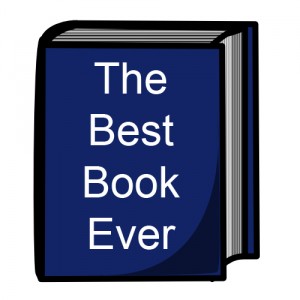
Written by The Best Author Ever
OK, so when Emily sent this topic to us, I really didn’t know what I was going to write about. Selling novels? Ads for blogs? How could I write an entire blog post about a subject I know so little about? And then I realized exactly what it could be about: marketing from an amateur writer’s point of view. If I can’t write from the perspective of an expert in advertising, I can write from the perspective of a beginner.
So what little do I understand about advertising? For starters, I know it plays a key role in helping anyone gain exposure. I also know that artists have to be especially involved in marketing their work, at least in the beginning. Because our chosen line of work is so subjective, we have to take the first steps to prove that our stories are worth reading, our music is worth listening to, and our visual pieces of art are worth seeing. Only from our hard initial efforts can the ball begin to roll toward our success, and even so, nothing is for certain.
Experienced Writer, Inexperienced Marketer
Maybe “experienced writer” is a bit of an exaggeration here, since there’s still much of the world of creative writing I haven’t ventured through yet, but that’s beside the point. What matters is that I have much more experience writing my work than I do marketing it, though I’m starting to understand more about the business side of art. Even before I started my blog, I was already learning how to get my writing noticed. While working on the first posts for my site, I also created some new social media accounts to share my content, and since then, they’ve proven quite effective in drawing new readers, as well as helping me meet new writers.
What I have no experience in yet, however, is marketing a novel. Even though I’ve been reading up on the subject, I still haven’t finished writing my first book, so I can’t say I know the experience of selling it firsthand. I know I’ll have to advertise it extensively on social media networks like Twitter and Facebook. I know I should try to reach out to other bloggers and have them help me share my stories (just as I’d love to help them share theirs). And I know that I should never give up on getting my work out to as many readers as possible.
So if I want to be a successful novelist, I’ll have to improve my marketing skills. I’ll have to advertise my stories as much as I can, and I’ll have to be patient as I do so, remembering that if I want my artistic voice to stand out among the countless others in the world, I have to keep making it heard. After all, in this day and age, the experience of being a writer extends far beyond the actual writing.
How experienced are you with advertising? Are you good about marketing your stories, or do you struggle with getting your work out there?
This has been a special topic post for Writers Reveal, a monthly blog swap among several talented writers. Be sure to check out the other blogs participating in the event. Thanks for reading!
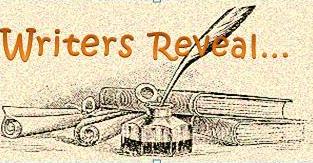
Other bloggers in Writers Reveal
Melissa Khalinsky: Melissa Writes
Becky Fyfe: Imagine! Create! Write!
Rhianna: A Parenting Life
Ashley Howland: Ghostnapped
Emily Hawker: You Learn Something New Every Day
Emily Toxward: Have A Laugh On Me
Love at First Sight: Fantasy or Non-Fiction?
Ah, love at first sight. It’s a beautiful idea, and with Valentine’s Day fast approaching, it’s easy to get lost in such a romantic thought. This is a trope that’s been present in romance for centuries. Romeo and Juliet, Cinderella and Prince Charming, Sir Lancelot and Queen Guinevere; all are well-known examples of couples in fictional tales and legends who fell in love instantly. But is love at first sight just a myth fit for fantasy, or is it real enough to warrant a place in more naturalistic fiction?
What is Love?
What a complex yet simple question. If you were to ask several different people what love is, you’d probably get several different responses in return. Everyone seems to have their own explanation, and the most interesting part is that they aren’t necessarily mutually exclusive.
Socially, it’s a strong positive connection between two people. Psychologically, it’s a form of deep affection for another being. Biologically, it’s a chemical reaction in the body that creates a feeling of intense passion. There are many ways to characterize love; it all depends on your chosen perspective and your personal experiences with it.
So what about love at first sight? If love is clearly possible between two people, can such a powerful attraction happen instantly?
The Science of Love at First Sight

Romeo and Juliet fell in love the moment they first laid eyes on each other (Romeo + Juliet, 1996)
I asked a few people I know for their thoughts on love at first sight, and to my surprise, the answers I got came from both sides of the debate. On the one hand, my mom (as well as most other people I asked) believes that such a concept is impossible in real life because love is based on something more than physical attraction, something you can’t discover until you’ve really gotten to know the other person. On the other hand, my dad not only believes in love at first sight, but he swears it’s happened to him at least once in his life. To hear others tell it, it was mostly likely infatuation at first sight, but if he believes it was love, who are we to say otherwise?
Oddly enough, some studies seem to suggest that love at first sight is indeed possible. I’ve read some interesting takes on the subject on sites like HowStuffWorks, Psychologies and Daily Mail, to name a few. Of course, it’s worth noting that most arguments defending the concept refer foremost to the physical side of love, but then again, what are human beings if not mostly flesh and blood, right? What matters is that science seems to support the idea that two people can accurately size each other up within the first three minutes of meeting, and have a good chance at making a subsequent relationship work.
Fiction or Reality?
So what does all this mean to writers of romance? I suppose it means whatever you want it to. Characters in fantasy stories can certainly fall in love instantly without compromising the plausibility of the plot; at the very least, the attraction could be attributed to magic. Yet writers of realistic fiction could also possibly make their characters fall in love immediately and get away with it, provided the event is narrated well enough to work in the context of the story.
As for me, even though I’ve never really experienced it myself (unless you count my first crush in Kindergarten), I like to believe that anything is possible. I don’t normally write about it in my own stories, as I prefer to have my characters’ relationships develop over time, but I wouldn’t discard the idea for a future project. It might be fun to explore the possibilities that come with falling in love at first sight!
What about you? Do you believe in love at first sight? Would you impose such a fate on your characters?
Four Words You May Be Using Incorrectly
Language is a beautiful thing. We use it every day to translate our thoughts and convey our feelings to our fellow human beings, and that has undoubtedly helped us to progress as a species. But the use of language is not without its flaws; words get mixed up and can be misunderstood if people don’t know how to use them properly. So just for fun, here are four words that are commonly misused in speech and/or writing in the English language. Enjoy!
1) If you have a question, please don’t “axe” me…
 OK, I know people aren’t really trying to say “axe” in this context, but the common mispronunciation of the word “ask” still bothers me enough to warrant a place on this list. I admit that I cringe a little whenever I hear someone say they want to “aks” a question; every time, the editor in my head screams “Ask! Ask! ASK!” Yes, I understand that people in different regions have different ways of speaking, and old habits are hard to break. But that doesn’t make this mistake OK.
OK, I know people aren’t really trying to say “axe” in this context, but the common mispronunciation of the word “ask” still bothers me enough to warrant a place on this list. I admit that I cringe a little whenever I hear someone say they want to “aks” a question; every time, the editor in my head screams “Ask! Ask! ASK!” Yes, I understand that people in different regions have different ways of speaking, and old habits are hard to break. But that doesn’t make this mistake OK.
So if you have a question, please don’t “axe” me. I don’t want to die.
2) “Defiantly” is not an alternative spelling for “definitely”.
Of all the spelling mistakes I come across regularly, this is one of those that bug me the most. Every time I see it made, a part of me wants to explain to the so-called language offender that “defiantly” and “definitely” are two completely different words that should never be confused. But people probably don’t notice the mistake because the spellings are so similar, or worse, they assume that one word is the same as the other because the error is so common.
Remember: “defiantly” means “showing open resistance”, while “definitely” means “without doubt”. Hopefully you can “definitely” love someone, but you don’t have to love them “defiantly”!
3) “Ironic” doesn’t mean what you probably think.
I’ve noticed that people sometimes like to use the word “ironic” as a synonym for “sarcastic”. But even though these adjectives have similar meanings, they’re not actually interchangeable, at least in a formal sense. Yes, the definition of “sarcasm” is “the use of irony to mock or convey contempt”, but the uses of these words in speech are still distinct. The best known meaning of the word “ironic” is “happening in the opposite way to what is expected”. Thus, irony is often used as a more harmless humor technique compared to sarcasm.
So whenever you describe an event as “ironic”, you may want to consider whether you really mean “sarcastic”, or vice-versa. ‘Cause you know, it’s sooo ironic when human beings make mistakes.

Even Windows has a sense of irony…
4) If you had “literally” died, you wouldn’t be here to tell the story!
Ryan: Did you see that? What just happened? That was literally a train wreck!
Steven: No, Ryan, it was figuratively a train wreck.
– Go On (Season 1, Episode 12 – “Win at All Costas”)
We all probably know someone who tends to overuse the word “literally” when speaking. “It was literally the best pizza in the world!” “It’s literally a million degrees today!” “The interview was literally a train wreck!” Over time, the word has become a common adverb for conveying exaggeration. However, although it’s technically acceptable in an informal way, “literally” shouldn’t really be used for emphasis, as it means “in the exact sense, without metaphor or allegory”.
So no, the wasp was not “literally” the size of a helicopter. No, you did not “literally” jump out of your skin at the sight of it. And no, you did not “literally” die of embarrassment when everyone laughed at you for running away. Otherwise, the military would be after that giant insect, you’d be an undead heap of raw meat and bones, and everyone would be feeling a horrible mix of confusion and guilt for having killed you with laughter!
What are your thoughts on these misused words? Any others you would add to this list?
A Light in the Dark: Blackouts as a Gateway for Inspiration
Lately there have been plenty of thunderstorms where I live. And as we all know, with thunderstorms often come power outages, or “blackouts”, if you will. Now I’ll be honest: I’m not a fan of blackouts. Storms fascinate me, and I enjoy watching the occasional lightning show outside my window, but when it means taking out the electricity that powers my computer and router, I can’t say I really care for it. There is an upside to blackouts, though, and the most recent ones in my area have inspired (read: practically forced) me to write this post.
 Let me start off by making a slightly embarrassing confession: I’m completely addicted to technology. I have trouble getting off the Internet for longer than an hour, I take an iPod with me every time I leave the house, and I always go to sleep well after midnight because I just can’t tear myself away from the screen before getting one more idea typed out. So the occasional abstinence from that addiction is probably healthy, especially for someone as hooked on electronics as me.
Let me start off by making a slightly embarrassing confession: I’m completely addicted to technology. I have trouble getting off the Internet for longer than an hour, I take an iPod with me every time I leave the house, and I always go to sleep well after midnight because I just can’t tear myself away from the screen before getting one more idea typed out. So the occasional abstinence from that addiction is probably healthy, especially for someone as hooked on electronics as me.
The thing is, electronic devices, despite all their practicality, are a major distraction. From what, you ask? Well, that depends on what type of person you would be without modern technology in your life. And as a writer, the type of person I would probably be is one who can frequently think up new ideas and write nonstop until a whole novel is done. But my gadgets always seem to draw my attention away from the tasks on which I should be focusing most.
Enter the power outage. Yes, I do get annoyed at first when a bad storm takes out the electricity; no TV or Internet means I can’t kill time on some of my favorite hobbies, and though I do work on a laptop, it’s already over four years old and the battery just doesn’t stay charged as long as it used to, so I prefer to leave it asleep. But I find that all these gadgets off allow for the quiet time in which some of my most creative ideas often emerge.
It’s kind of like meditation, really. I’m too easily distracted by the technology around me, and too addicted to drop it at a moment’s notice (without suffering withdrawals, of course). Yet I love taking the occasional break just to daydream, and when I can’t be drawn back to my electronic devices right away, those breaks can last even longer, providing extra time for a good story to come to me. On top of that, I have more time for hobbies like reading books, listening to music, and other activities that help me get inspired for writing.
So if you have a stronger willpower than I do when it comes to technology, I highly recommend taking long breaks from it once in a while, at least enough to let your ideas flow without distraction. And if you are like me, thoroughly annoyed throughout the first minutes of a blackout, try to think of it as an opportunity to set your creative spirit free. Maybe all it wants is a chance to breathe.
Are you as hooked on technology as I am (or worse)? Do blackouts ever help you keep your addiction in check, or are they just a reason for angst?
Off The Bookshelf: The Little Prince
I wanted to start this year’s Off The Bookshelf posts with a review of a beautiful story that I finally got around to reading recently. I know I really should have read it (or rather, finished reading it) a long time ago, and after I did, I realized what I had been missing since I was a kid. So long overdue, here is a review of a classic tale by a French aviator and author: The Little Prince, by Antoine de Saint-Exupéry.
Summary
The Little Prince (or Le Petit Prince, in its original French title) was first published in 1943 by Reynal & Hitchcock, in both English and French. Narrated in the first person, the book tells the story of a pilot who ends up stranded in the desert, where he meets a strange boy from a distant and tiny “planet” (which is really an asteroid). Over the eight days it takes him to fix his plane, the narrator gets to know the story of this “Little Prince”, from the life he had on his planet to the journey that brought him to Earth. The Little Prince enchants the pilot with his eccentric and poetic outlook on the world, and when the time comes for both of them to return home, the narrator is utterly heartbroken to lose the only friend he’s ever known who could appreciate life with the beautiful innocence of a child.
Review
What stands out most about this book is how it criticizes the “adult” way of thinking. The story begins with the narrator telling his readers how he was discouraged from pursuing art by grown-ups who couldn’t comprehend his drawings when he was younger. Since that time, the Little Prince was the first person he ever met who understood the vision he had as a child. Still very young himself, the Prince thus represents the simple way children see the world in contrast to the analytical views of adults, and does so in a way that makes the former much more appealing.
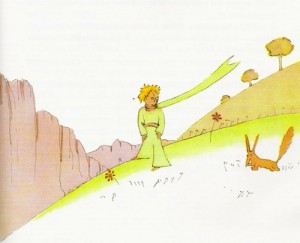
The Little Prince and the Fox
(Illustration by Antoine de Saint-Exupéry)
Though appearing to be a children’s book, The Little Prince is arguably targeted at adults who have forgotten how to understand the world the way they should. We as mature readers have it constantly pointed out to us that our manners are flawed, that we are too concerned with “matters of consequence”. Basically, we’ve become so focused on trivial details that we’ve lost sight of the things that are truly important. Perhaps this idea is most evident in a scene involving another well-spoken character of the story: a fox that the prince meets on his journey through Earth.
One sees clearly only with the heart. What is essential is invisible to the eye.
– The Fox, The Little Prince (Antoine de Saint-Exupéry, 1943)
The Little Prince is a charming tale fit for readers of all ages. For adults, it’s a reminder of the lessons that can be learned from youth, many of which may have been lost long ago. As for children, they can find embedded in these pages the encouragement to keep living their own special way, and, if nothing else, a friend who can teach them the real matters of so much importance.
Inspiration
If there’s one thing I loved most about this book, it was the way it constantly reminded me how I used to see the world when I was a little girl (and how I probably should see it again as a woman). Living in a world that seems to demand we grow up as quickly as possible, it’s easy to forget what it’s like to experience life through the innocent eyes of children. The Little Prince’s questions and observations, coupled with the grown-ups’ awkward answers, served as a lesson on how I should never lose touch with the curious child still in my heart, for to do so would be like losing a very special friend.
Overall, I enjoyed this book very much. Though it did break my heart a little, it was wonderful to read a story that could effortlessly shine light on the poetry children can bring to the world. The Little Prince has a lovely perspective on life, and after reading his story, I only hope I can remember to keep setting my inner child free. She is, after all, a very important friend to the grown-up writer I’ve become.
Writing for Animal Characters (Writers Reveal)
Welcome to the first Writers Reveal of the year! This month’s topic was sent to me by Ashley Howland, who asked me to write about animal characters: who are my favorites, what makes a good animal character and storyline, etc. Honestly, I don’t think she could have picked a topic better suited for me. Thanks, Ashley!
Favorite Animal Characters

The Complete Tales of Winnie-the-Pooh, by A.A. Milne
I was pleasantly surprised when Ashley sent me this topic, because the truth is that many of my favorite fictional characters in the past have been animals (or at least non-human). I’ve mentioned before that I spent part of my childhood writing stories about video game characters, most of which were non-human (e.g. Yoshi, the colorful dinosaur species from the Mario franchise). Even today, I love writing stories about animals, especially flash fiction pieces narrated from their point of view. Maybe it’s because I studied Biology (or maybe it’s why I studied Biology), but I have a lot of fun imagining the world through the eyes of animals!
Honestly, I find it hard to choose just a few favorite animal characters. It really depends on their stories. In books, I love the animals in the children’s stories I used to read all the time, like Horton the Elephant in Dr. Seuss’s Horton Hears a Who! and Mr. Fox in Roald Dahl’s Fantastic Mr. Fox. As for movies, my favorite animals are usually the sidekicks thrown in for comic relief (and often to help move the plot forward): Maximus, the horse in Disney’s Tangled; Dug, the dog in Pixar’s Up; Jack, the monkey in Pirates of the Caribbean, etc. Of course, I also enjoy movies where the main cast is comprised of animal characters; stories such as The Lion King and Finding Nemo are among my favorites!
Still, I’ll probably always have a soft spot for the animal characters of video games. Whether they’re sidekicks like Yoshi or main characters like Sonic the Hedgehog, they always bring something special to their games, and that “something” is usually a twist on the abilities of their real-life counterparts. Where else but the Gameverse can you find hedgehogs that run at the speed of sound, or foxes that fly planes and spaceships, or mouse-like creatures that can shoot lightning? They may not be like the animals of books and movies, but that’s exactly why I love them. They would likely push the boundaries of plausibility in standard fiction, but in their own interactive worlds, they fit perfectly well.
Writing for Animals
So what does it take to create a good animal character or story? In my opinion, it’s all about balance. Every character you want to make relatable must have realistically human qualities. However, one mustn’t forget that these characters are not human, and when written well, this detail is exactly what gives them their unique charm. After all, if the animals in your stories are too human, you might as well replace them with actual humans, right?
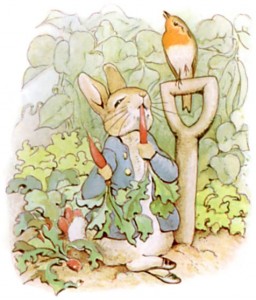
Peter Rabbit (The Tale of Peter Rabbit, by Beatrix Potter)
Therefore, I think the greatest animal characters are the ones that encompass the best of both worlds. They’re anthropomorphic enough to be relatable, but they still take advantage of the qualities that their human counterparts don’t possess. Horton, the most compassionate resident of the Jungle of Nool, uses his extra-sensitive hearing to communicate with the microscopic Whos. Mischievous characters like Dahl’s Mr. Fox and Beatrix Potter’s Peter Rabbit use their agility and wits to escape from their human pursuers. Even the best mythical creatures of fantasy tales demonstrate a mix of human intellect and animalistic behavior (with a touch of magic, of course).
But these characters’ traits don’t always have to be useful to the plot. Sometimes just the fact that they’re animals is what makes them endearing. Would Winnie-the-Pooh have withstood the test of time if he were a human doll instead of a stuffed bear? Could Shakespeare’s Hamlet be appealing to children if it weren’t played out by a cast of animated lions? Would the Pokémon franchise have become successful if most of the creatures’ designs and abilities weren’t inspired by those of real animals? Probably not!
Based on my experience, animals make wonderful inspiration and even better characters for fiction. They can always bring something fresh to a story, and they have the potential to capture their audience and stay in our hearts for years on end. And isn’t that all a writer really wants from their characters?
Who are your favorite animal characters? What do you think makes a good animal character or story?
This has been a special topic post in Emily Morgan’s Writers Reveal. To learn more, just follow the button below to her site, and be sure to check out the other blogs participating in the event. Thanks for reading!
Other bloggers in the Writers Reveal
Emily Morgan: Emily Morgan Writes
Melissa Khalinsky: Melissa Writes
Jodi Gibson: JFGibson
Becky Fyfe: Imagine! Create! Write!
Rhianna: A Parenting Life
Ashley Howland: Ghostnapped
Emily Hawker: You Learn Something New Every Day
Emily Toxward: Have A Laugh On Me
My Top Ten Books
Recently, I was tagged over on Rachel Rose Teferet’s blog, in a post about the top ten books that have been influential to her as a writer. To keep the chain moving forward, I’m now sharing my own Top Ten list. So in no particular order, here are the books that have helped me evolve as a writer (and as a person). Note that I had to omit some excellent titles, but there were so many choices that it was hard to come up with just ten. Also, I’m counting series as one item each! Enjoy!
 1) The Bible
1) The Bible
OK, maybe I borrowed an idea from Rachel for how to start my list. Or maybe I just couldn’t lead with any other book. You decide. Either way, the Bible has been an important resource to me, mostly for its abundance of lessons that have helped me and my family through some trying times in our lives. Though I don’t like to think of myself as a religious person (if anything, I prefer the term “spiritual”), the Bible is a special book that will always hold a place on my shelf.
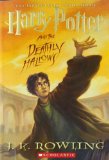 2) Harry Potter, by J.K. Rowling
2) Harry Potter, by J.K. Rowling
This is probably the most important book series of my childhood. Being part of the “Potter generation”, I had the privilege of growing up with this wonderful story, reading each new novel shortly after it was released. With its excellent narration, detailed plot and intriguing characters, the Harry Potter books taught me almost everything I know about storytelling, and I’ll always treasure them as the books that kept me hooked on fantasy for life.
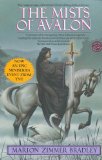 3) The Mists of Avalon, by Marion Zimmer Bradley
3) The Mists of Avalon, by Marion Zimmer Bradley
If Harry Potter was a big part of my childhood, The Mists of Avalon was a big part of my adolescence. This Arthurian fantasy saga introduced me to mature themes such as feminism and religious intolerance, and for that, it was a major step in my development as a writer of more advanced fiction.
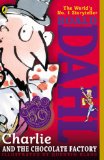 4) Charlie and the Chocolate Factory, by Roald Dahl
4) Charlie and the Chocolate Factory, by Roald Dahl
This was the book that first inspired me to become a writer. After reading Roald Dahl’s enchanting tale about young Charlie and his wild adventures through Wonka’s magical chocolate factory, I knew that creating fantasy stories of my own was something I wanted to do for the rest of my life.
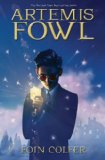 5) Artemis Fowl, by Eoin Colfer
5) Artemis Fowl, by Eoin Colfer
I started reading this series around the same time that I was reading Harry Potter, and I probably loved it just as much. Written by an Irish author, Artemis Fowl never failed to bring a humorous twist to the fantastic adventures about a boy genius and his interactions with the technologically advanced Fairy People. They were also the books that introduced me to “science fantasy”, a genre mixing elements of science fiction and fantasy. What could be better?
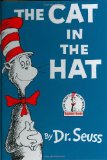 6) The Cat in the Hat, by Dr. Seuss
6) The Cat in the Hat, by Dr. Seuss
It may seem like an odd choice, but I added this children’s book to my list because it was one of the first books that I could ever remember reading by myself. By the time I started learning how to read, we had a huge collection of Dr. Seuss stories, and The Cat in the Hat was one that I always loved reading with my mother. Having been introduced to literature with Seuss’s fun rhymes and memorable characters, it’s no wonder I developed a love of books at such a young age!
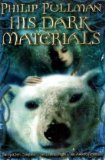 7) The Golden Compass, by Philip Pullman
7) The Golden Compass, by Philip Pullman
I admit, I didn’t start reading the His Dark Materials trilogy until after the movie came out, but I’m glad I did. Though the books are interesting enough for the author’s (often thinly veiled) metaphors criticizing religious organizations, I appreciated the story mostly for its fantasy elements, especially the creative idea of a parallel universe where human souls exist as tangible animal spirits. If anything, The Golden Compass and its sequels have taught me a lot about symbolism, which is one of my favorite parts about writing fiction.
 8) Romeo & Juliet, by William Shakespeare
8) Romeo & Juliet, by William Shakespeare
How could I possibly leave this story out? Most of my favorite romantic stories (as much to read as to write) are about forbidden love, and Romeo & Juliet is certainly the epitome of this plot type. This was the first Shakespearean play I ever read, and after growing accustomed to the style of writing, I quickly fell in love with his poetry. I think what I like most about this story is how it can be interpreted in so many different ways, and how a lot of its elements seem to be relevant even today. Why else would it still be so popular after 400 years?
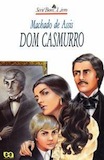 9) Dom Casmurro, by Machado de Assis
9) Dom Casmurro, by Machado de Assis
Why not throw a foreign language book into the mix? Though I had to read several books in Portuguese for school, this was one of the few that I actually liked. Written in the 19th century, Dom Casmurro is a realist story told from the perspective of a jealous man who suspects his wife of having been unfaithful. The main reason I find this book so interesting is because it’s an excellent example of the “unreliable narrator”, as it’s never made clear in the story whether his wife actually cheated on him or it was all just in his head. The author’s achievement of sparking heavy debates over the story to this day make this novel a classic of Brazilian literature.
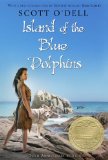 10) Island of the Blue Dolphins, by Scott O’Dell
10) Island of the Blue Dolphins, by Scott O’Dell
This book was recommended to me by my mother, who also read it when she was younger. I enjoyed reading about Karana’s adventures living alone on an island for years, and her story helped me see themes like social interaction and survivalism in a new light. Looking back, I realize this was one of the first examples I’d seen of a strong female protagonist, and I’ve since been inspired to create heroines who are equally independent and profound in character.
Now to move the chain forward, I’m tagging Vanessa Levin-Pompetzki and Inion N. Mathair. What are your top ten books?

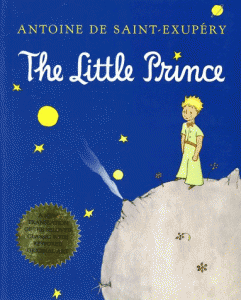


Recent Comments